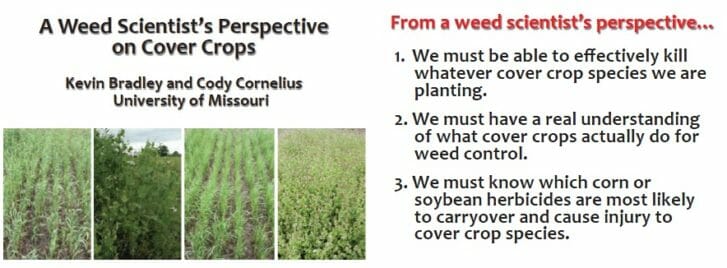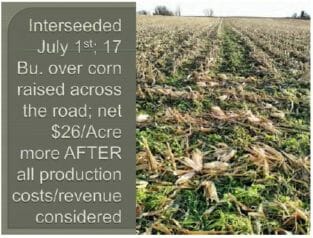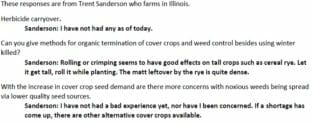Managing for Cover Crops: don’t forget agronomic basics
In February of 2016, the American Society of Agronomy (ASA) held a series of webinars for CCAs and others in the Midwest to learn more about making cover crops work. This webinar, Managing for Cover Crops: Don’t Forget the Agronomic Basics, will focus on the agronomic adjustments researchers/producers/CCAs need to remember when adding cover crops to the current farming system. Learn from Trent Sanderson, farmer from Clare, IL, about what agronomic considerations they remember when managing cover crops. Hear about planting date, seeding method, seeding rate, species selection, pest management, herbicides, and the effects on the following crop, among others. Learn from State of Missouri Extension Weed Scientist, Kevin Bradley about the effects of herbicide carryover on cover crops, how to terminate cover crops, and what cover crops actually do for weed control. Information shared will be targeted to ag professionals who consult with farmers adding cover crops. CEU credits are still available if you log in through the ASA website.
Kevin Bradley is an Associate Professor and State Extension Weed Scientist in the Division of Plant Sciences at the University of Missouri. Kevin’s faculty appointment includes extension and research responsibilities in the area of applied weed management in corn, soybean, wheat, pastures, and forages. He also teaches a graduate level class in herbicide mechanism of action. In addition to evaluating new herbicides and weed management techniques, Dr. Bradley’s applied research program focuses on the development of programs for the prevention and management of herbicide-resistant weeds, on the interaction of herbicides and weeds with other agrochemicals and pests in the agroecosystem, and on the effects of common pasture weeds on forage yield, quality, and grazing preference.
Trent Sanderson- Trent Sanderson is a 27 year old farmer from north-central Illinois. As a producer with two older generations on the farm, Trent and his family have a diverse range of knowledge surrounding conservation practices as they strive to be good stewards of the land. Their main commodities include corn, soybeans, wheat, red clover and a cow-calf operation. Since 2007, all of their corn acres are strip-tilled, and the remaining crops are no-tilled. Cover crops became a part of their land stewardship program in 2012, experimenting with different species and management practices. Trent has built a cover crop dealership based on practical results with existing equipment and species selection to help local producers adopt cover crops onto their farm.
Trent responded to several questions that were asked following the webinar.
ASA has offered several cover crop webinars and a few of those can be seen here. Cover crops in the Midwest Corn Belt may be used to accomplish several goals, including erosion control, limiting nutrient movement off-site, enhancing nutrient cycling, and breaking pest cycles, among others. Precipitation amounts, temperature and growing degree-days, and soils differ greatly throughout the 12-state region. In this 3-part webinar series, researchers, CCAs, and producers will present principles and applications of how cover crops have been incorporated into some agricultural management systems across the Midwest.



